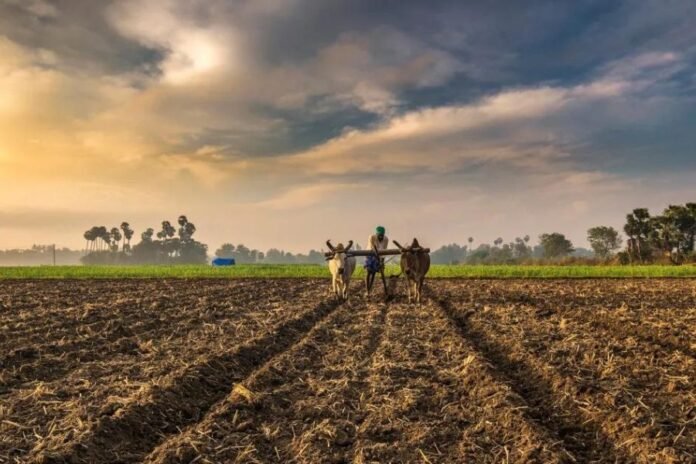Politicians and economists of all stripes have vigorously debated and critiqued the union budget that Union Finance Minister Nirmala Sitharaman unveiled on July 23. However, unlesss the government of Prime Minister Narendra Modi ensures that the needs of those at the bottom of the economic pyramid are adequately met, the objective of ‘Viksit Bharat’ cannot be achieved.
This idea is founded on an architectural principle: a superstructure that is meant to last must have a solid foundation. It is architectural fantasy to build a first floor without investing in a ground level infrastructure; the same goes for economic planning.
India’s economy may be expanding at the quickest rate in the world, which is something to be proud of, but such accomplishments cannot be viewed in a vacuum. They must be compared to fundamental queries such as who benefits from growth, which group in society prospers, and what kind of distributive dispersion there is.
India’s economy is the fifth largest in the world, however we have a pitifully low per capita income, coming in at 142 out of 197 countries (2020 numbers). The conclusion is clear: even if our economy is large and growing, the benefits are distributed extremely unequally, with terrible deprivation at one level and enviable wealth at another. Our overall growth will remain a chimera on shaky grounds unless we find a way to address this asymmetry, both politically and economically.
PM Modi must ensure that his government gives priority attention must be provided to the industries where the advantages of our economic growth have not yet reached the intended levels in order to reconcile this discrepancy. The main sector at the base of the pyramid is agriculture.
According to data from 2022–2023, it affects two thirds of our population and employs 45.8% of our labor force. But the growth rate in agriculture fell from 4.7% in FY 23 to 1.4% in FY 24. Has enough attention been paid to this obviously significant statistic in the Budget and the countless arguments around it?
If insufficient efforts are made to initiate a fresh revolution in the lives of farmers and consequently in rural India, analogous to the Green Revolution of the 1960s, there will not be Amrit Kaal in 2047.
Despite having the greatest amount of arable land in the world, India produces relatively little food. China produces nearly twice as much rice per hectare as we do. Vietnam’s and Indonesia’s is likewise significantly more. Infrastructure and technology are desperately needed in agriculture.
The expanded use of irrigation—including the water-saving technique of drip irrigation—better agricultural extension services, improved seed technology, the application of suitable fertilizers, effective cooperatives, mechanization, enhanced credit services, significantly more warehouse and cold storage facilities, improved road connectivity, crop diversification—including the production of cash crops—marketing networks, stable policy, and far more efficient R&D inputs are a few of these.
It’s not like the past or present governments haven’t taken any action in these areas. However, it is evident that productivity and total agricultural income have not increased appreciably. The majority of the funding allotted for agriculture is used for subsidies like MNREGA and fertilizers. However, do they actually close the gap between producers and consumers—that is, between the spade and the fork? Data indicates that in the end, customers gain more from these subsidies. Moreover, programs like MNREGA are not answers; they are only palliative measures, possibly even required given the state of poverty.
Again, given that the government asserts that 250 million people have been lifted out of poverty in the last ten years, continuing to feed 800 million people free meals under the PM-Garib Kisan Kalyan Yojna—which was ostensibly a temporary measure following COVID—is political populism.
While infrastructure projects are crucial and have a large budgetary allocation, the food processing industry should have received an equal level of funding. A widespread and easily accessible network of food processing enterprises is necessary to add value to farm products; otherwise, agricultural incomes will either remain stagnant or decline. A large portion of these industrial investments can be planned to be labor-intensive, giving farmers who are unemployed or underemployed jobs.
Also Read: Decoding defence allocation by Modi 3.0
In a similar vein, it is difficult to understand why the government of PM Modi cannot consent to a negotiated certain Support Price (MSP) that guarantees farmers a certain level of income support and encourages crop diversification. Such support is extended to the manufacturing and industrial sectors in a variety of ways. In summary, increased agricultural incomes have significant ripple effects on the economy as a whole. One of the largest marketplaces for a wide variety of products is rural India, including fans, lights, tractors, motorbikes, cosmetics, detergents, clothes, and footwear. Increased farmers’ disposable income expands the market, which can be used as a strategy to increase demand.
It’s time for our legislators to stop talking about the capital gains tax and start talking about fundamental reform that will have the most impact on the lives of as many people as possible. Here, the three main goals are education, health, and agriculture. There is no way for the wealthy to declare their own republic. Modi 3.0 will have to provide the impoverished, most of whom live in the rural hinterland, their due.



